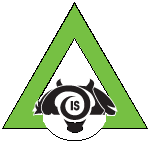Приказ основних података о документу
Assessment of biosecurity and welfare of calves reared in intensive housing system
| dc.creator | Samolovac, Ljiljana | |
| dc.creator | Hristov, Slavča | |
| dc.creator | Ostojić Andrić, Dušica | |
| dc.creator | Pantelić, Vlada | |
| dc.creator | Nikšić, Dragan | |
| dc.creator | Stanojević, Dragan | |
| dc.creator | Stamenić, Tamara | |
| dc.date.accessioned | 2021-12-16T11:32:47Z | |
| dc.date.available | 2021-12-16T11:32:47Z | |
| dc.date.issued | 2021-10 | |
| dc.identifier.isbn | 978-86-82431-77-0 | |
| dc.identifier.uri | http://r.istocar.bg.ac.rs/handle/123456789/763 | |
| dc.description.abstract | The quality of farm animal welfare largely depends on a number of measures and procedures carried out on farms, which are defined by one name as biosecurity. The application of certain management practices differs from farm to farm, and accordingly their impact on the quality of animal welfare differs. The quality of biosecurity, welfare and the presence of factors that threaten them depend on the technology of production on the farm, animal husbandry systems, microclimatic and hygienic conditions, management, procedures performed on animals and the way they are performed, the attitude of employees towards animals, their training and competence, etc.The aim of this study was to determine the impact of intensive calf rearing on differences in biosecurity and welfare quality assessment on two dairy farms. The technological process of production on both farms is similar, since both farms operate within the same production system. On both farms, there is a nursery in a separate facility, but without individual calving boxes. Calves are separated from their mothers immediately after birth. One of the significant differences between the farms was the way the calves were kept in the first 7 days of life. On one of the farms (A) the calves were kept tied in the nursery, while on the other farm (B) they were housed in individual boxes, also located within the nursery. At 8 days of age, calves were placed in group boxes, in a special facility, rearing stable. The greatest weaknesses and threats to biosecurity and welfare on both farms were manifested at the earliest age of calves, and they relate to the accommodation and feeding of newborn calves with colostrum. Determined that newborn calves were kept tie-stall housing system or in dimly lit individual boxes of inadequate size and design, housed in the nursery together with the cows. This increased the calf's exposure to a number of pathogens. The risk to biosecurity and welfare is higher when inadequate colostrum consumption is taken into account in terms of quantity, manner and time of feeding. When it comes to calves of older categories, the situation was significantly more favourable in terms of nutrition and housing conditions, as well as health surveillance and provided great opportunities in terms of further improvement. | sr |
| dc.language.iso | en | sr |
| dc.publisher | Institute for Animal Husbandry, Belgrade-Zemun | sr |
| dc.relation | info:eu-repo/grantAgreement/MESTD/inst-2020/200022/RS// | sr |
| dc.rights | openAccess | sr |
| dc.rights.uri | https://creativecommons.org/licenses/by/4.0/ | |
| dc.source | Proceedings of the 13th International Symposium Modern Trends in Livestock Production October 6 – 8, 2021, Belgrade, Serbia | sr |
| dc.subject | biosecurity | sr |
| dc.subject | welfare | sr |
| dc.subject | risk factors | sr |
| dc.subject | intensive production system | sr |
| dc.title | Assessment of biosecurity and welfare of calves reared in intensive housing system | sr |
| dc.type | conferenceObject | sr |
| dc.rights.license | BY | sr |
| dc.citation.spage | 56 | |
| dc.citation.epage | 72 | |
| dc.identifier.rcub | https://hdl.handle.net/21.15107/rcub_ristocar_763 | |
| dc.identifier.fulltext | http://r.istocar.bg.ac.rs/bitstream/id/3977/bitstream_3977.pdf | |
| dc.type.version | publishedVersion | sr |


